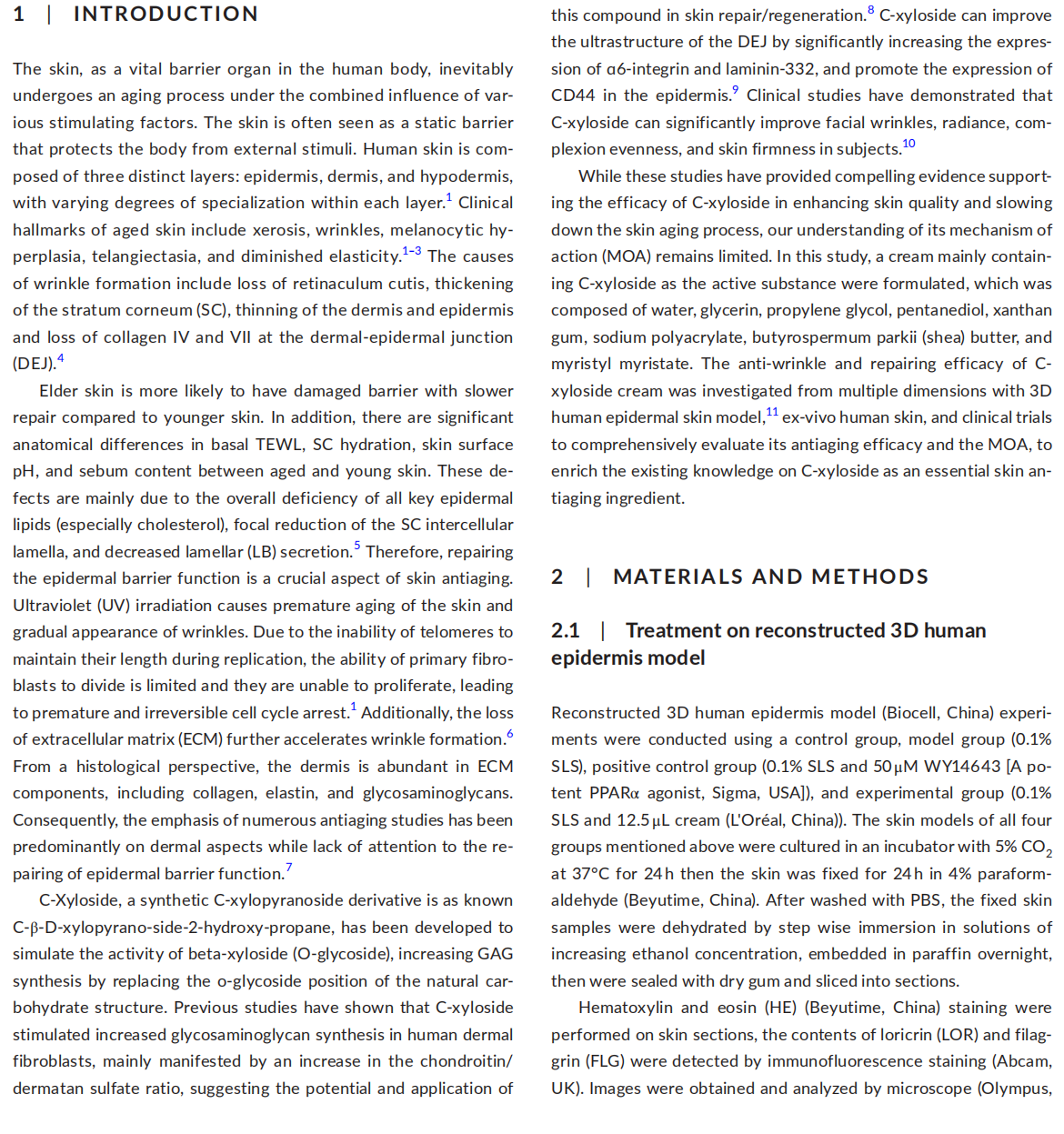

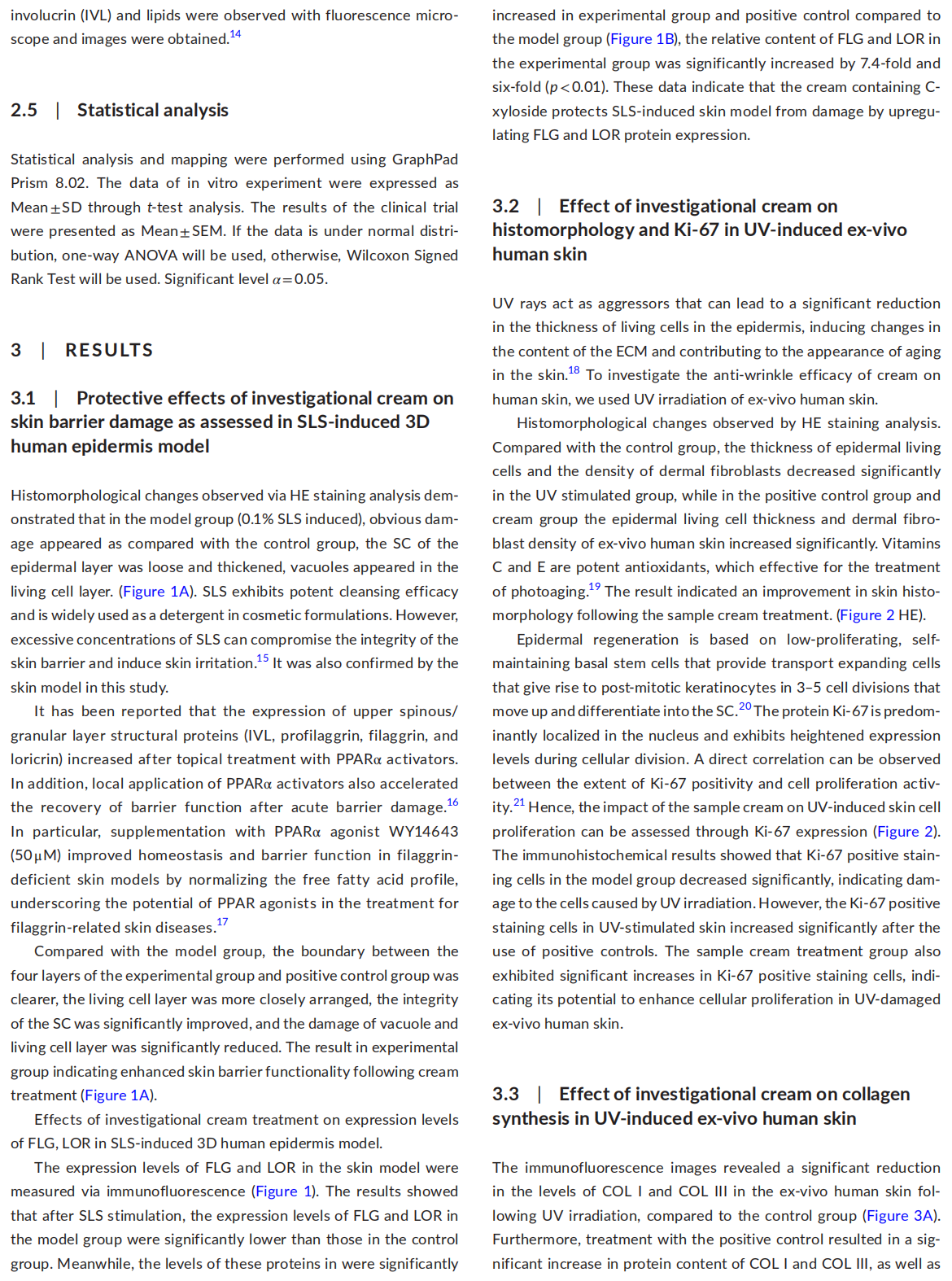
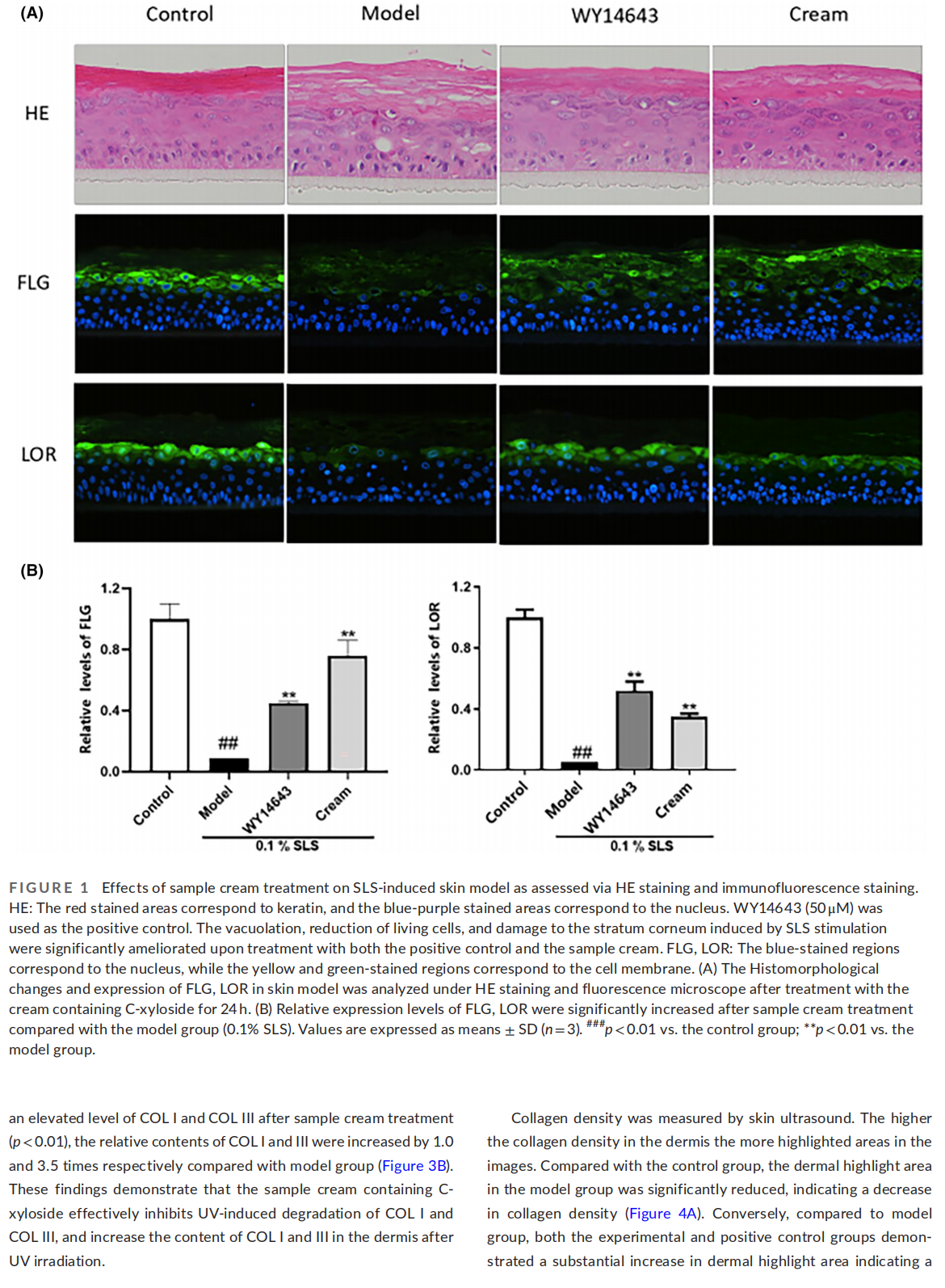
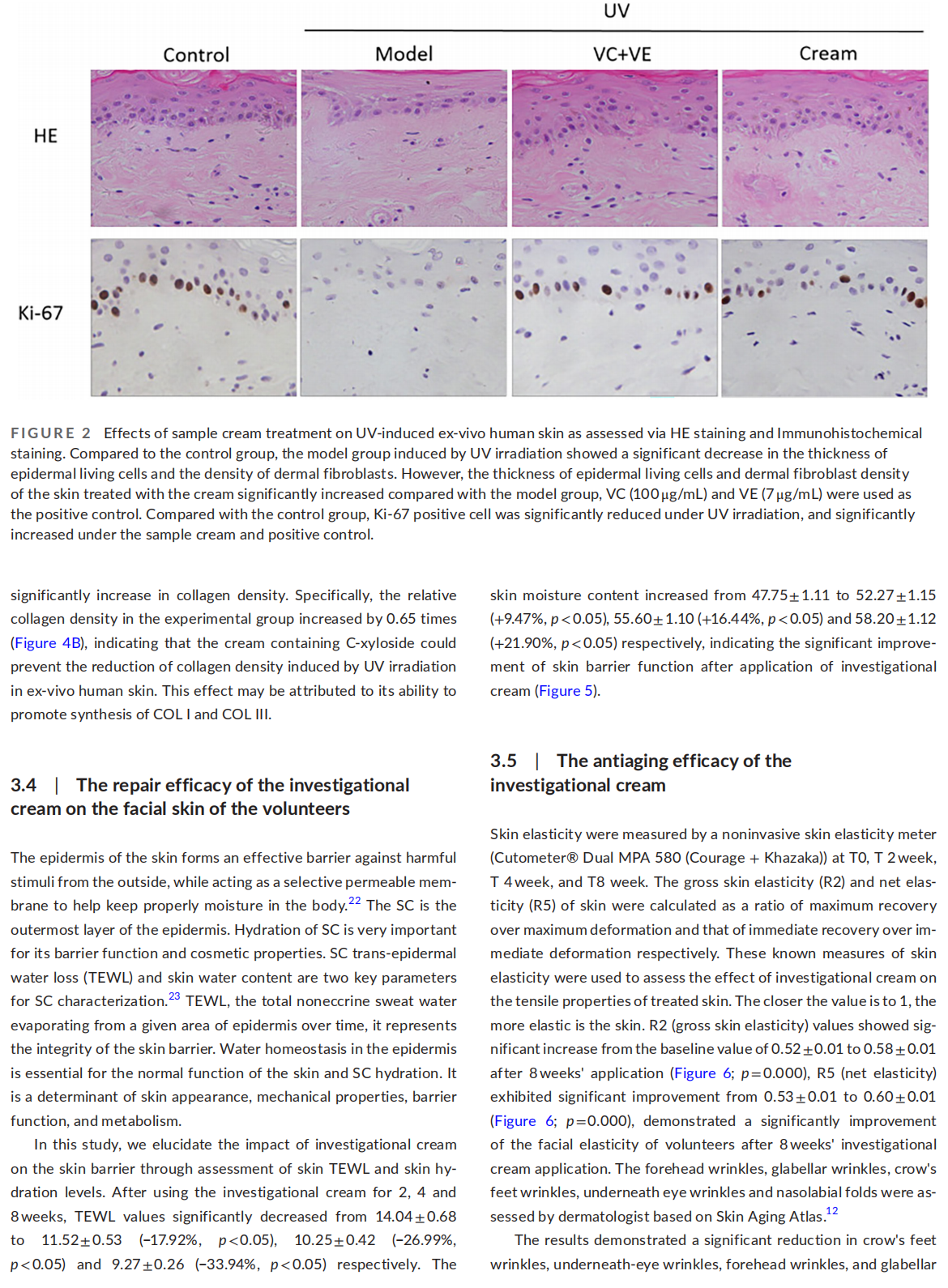
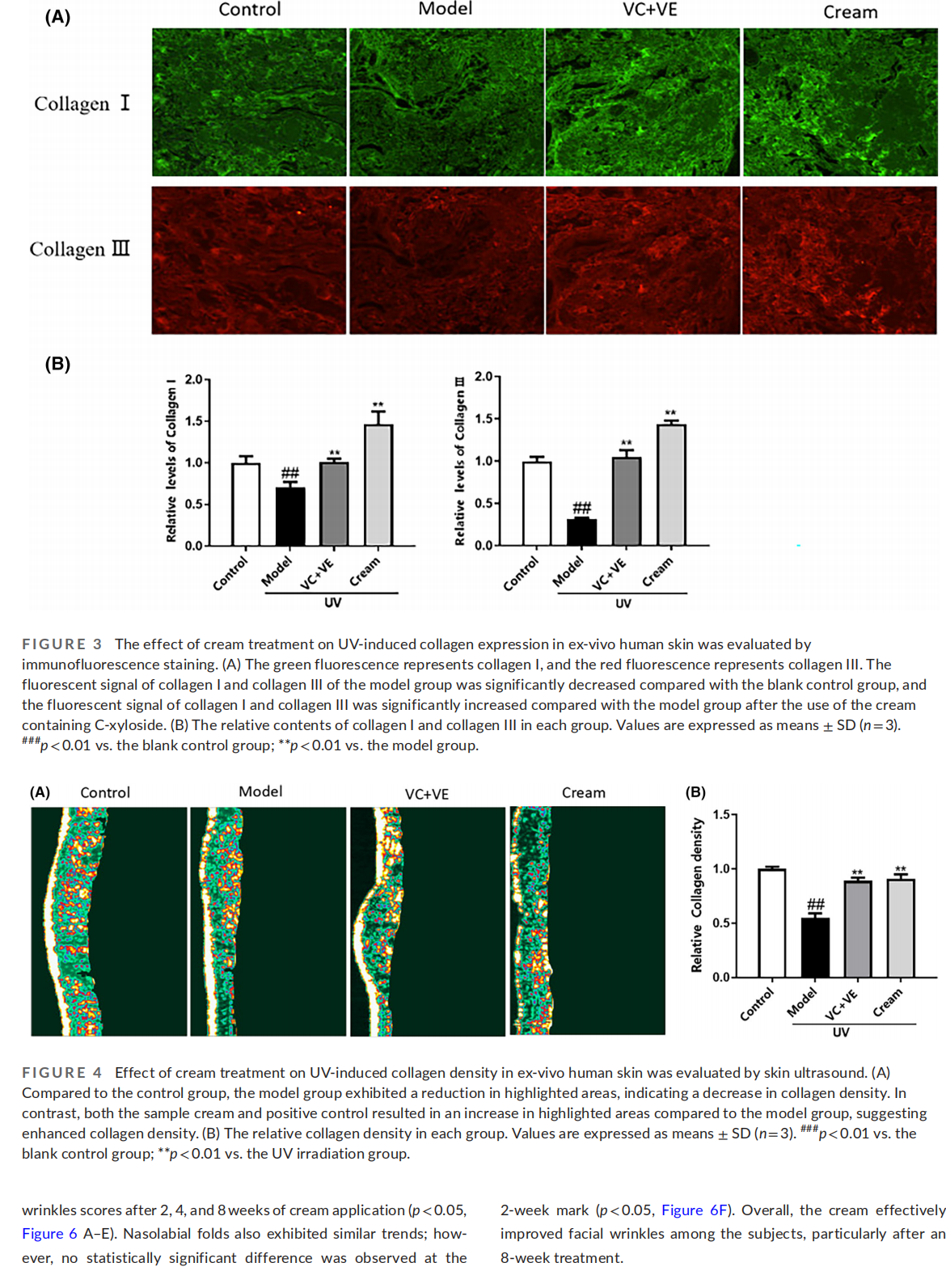
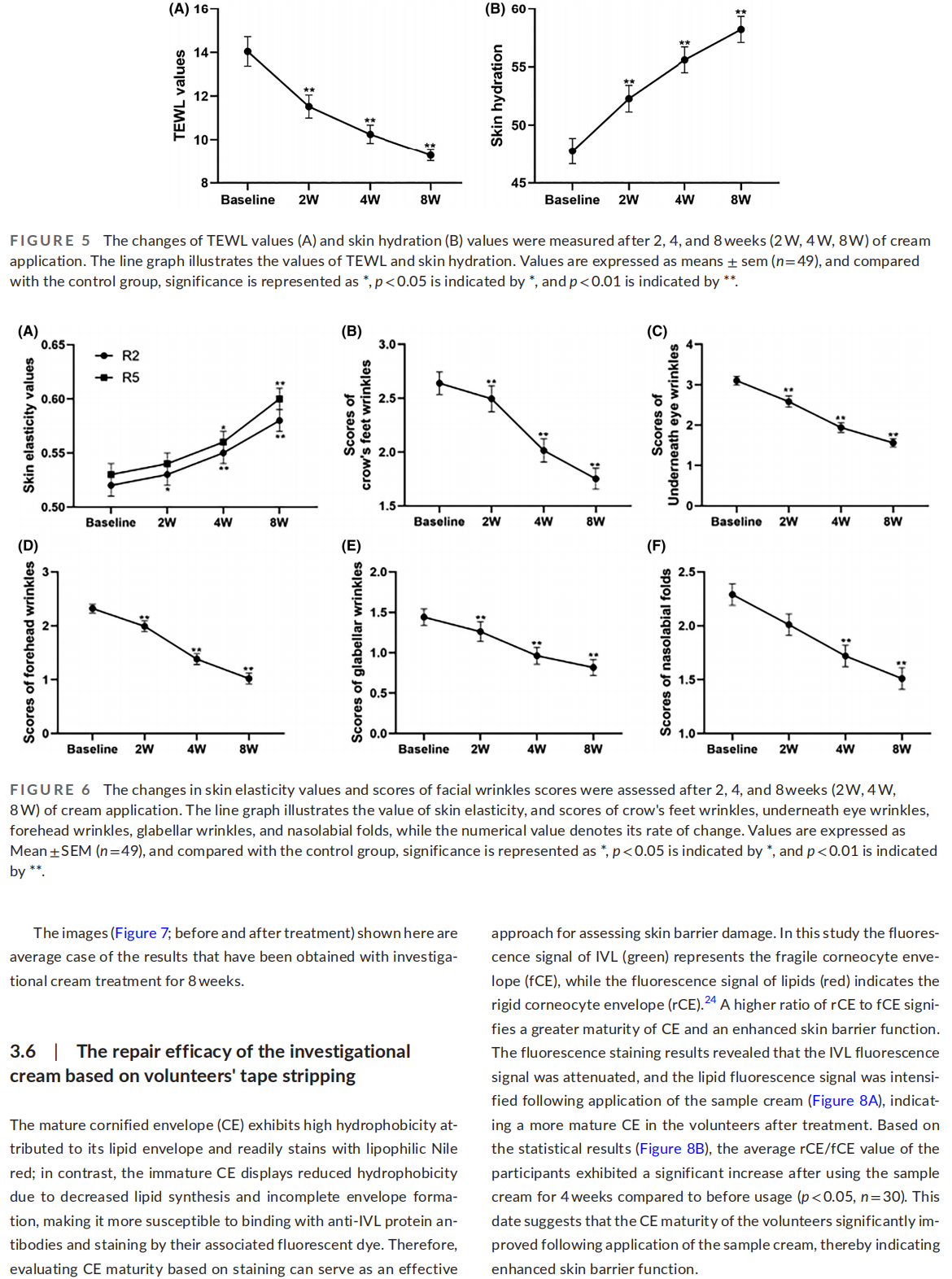
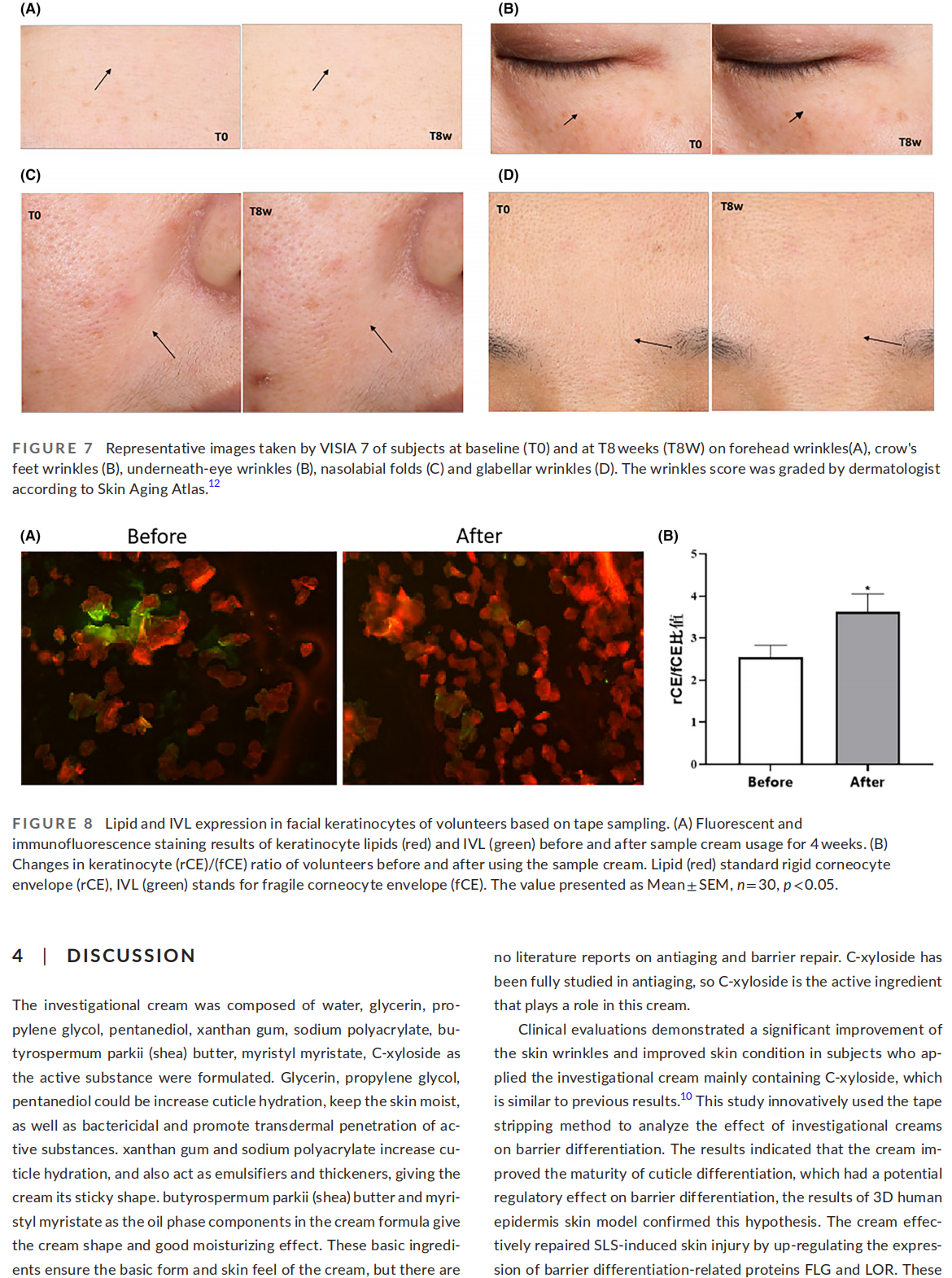
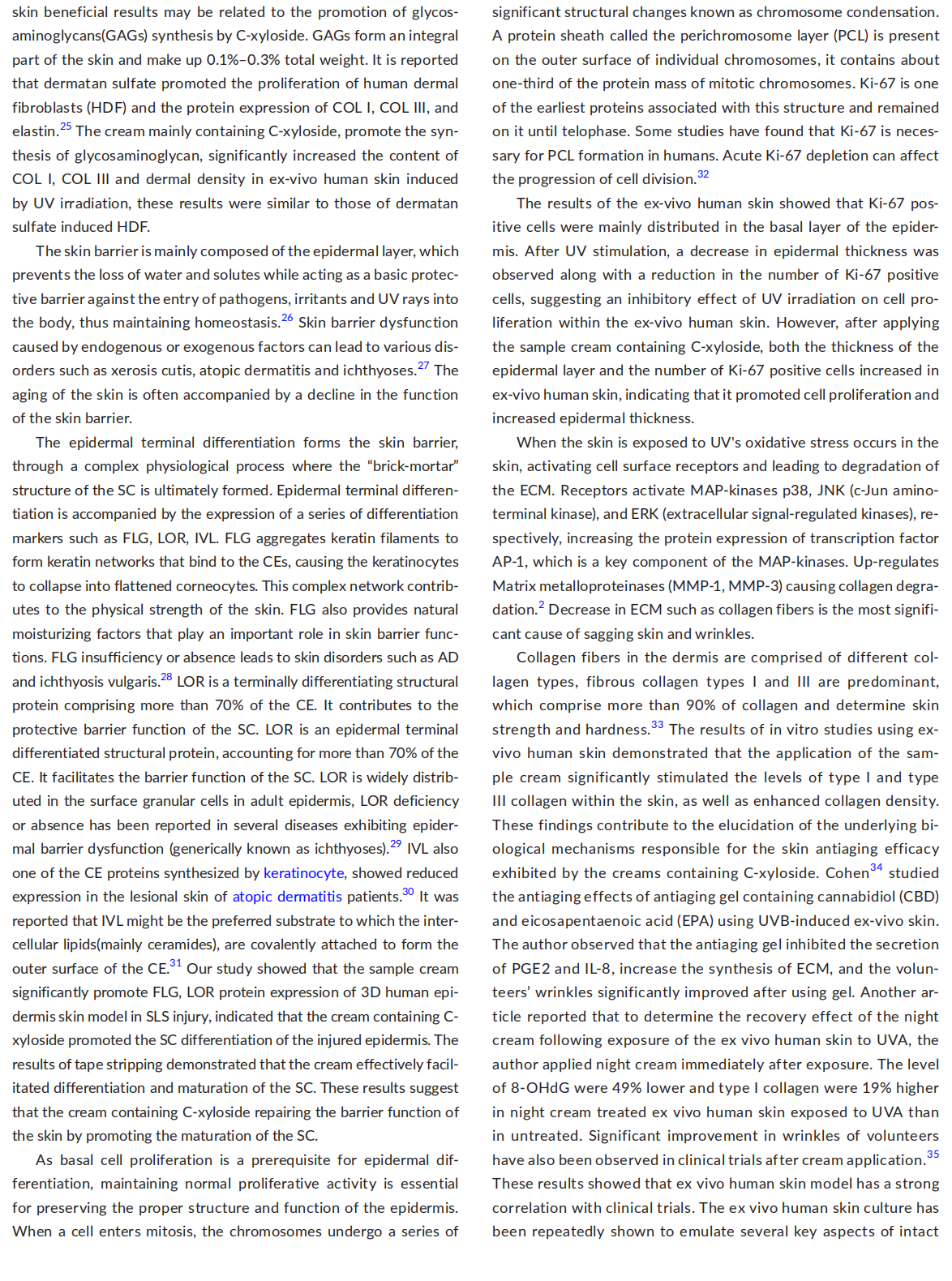
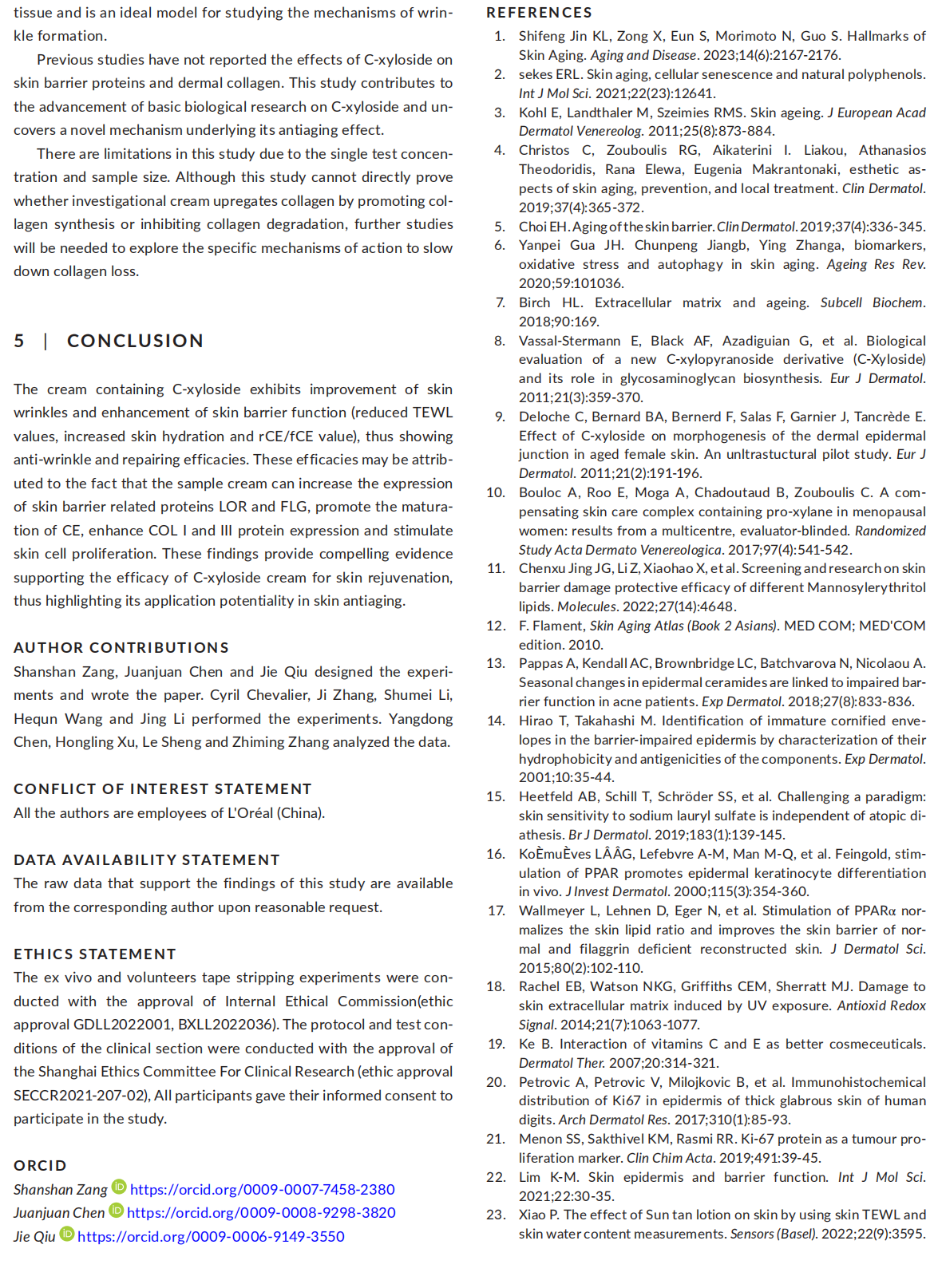
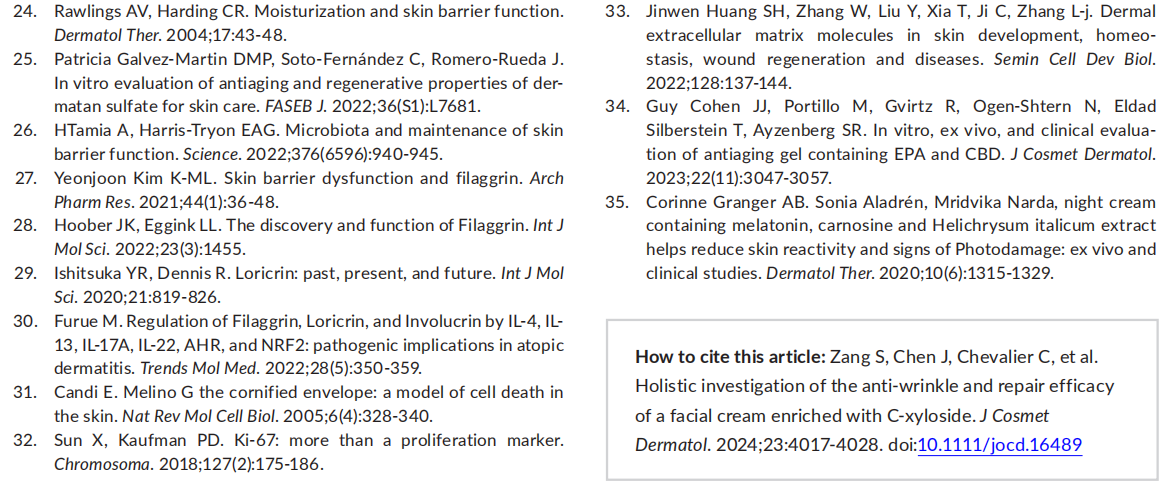
This article is excerpted from the L' Oreal (China) Research and Innovation Center, Shanghai, China by Wound World.
Shanshan Zang PhD | Juanjuan Chen MS | Cyril Chevalier MS | Ji Zhang MS | Shumei Li MS | Hequn Wang PhD | Jing Li MS | Yangdong Chen MS | Hongling Xu MS | Le Sheng MS | Zhiming Zhang MS | Jie Qiu PhD
L' Oreal (China) Research and Innovation Center, Shanghai, China
Correspondence
Jie Qiu, L' Oreal (China) Research and Innovation Center, Shanghai, China.
Email: 该Email地址已收到反垃圾邮件插件保护。要显示它您需要在浏览器中启用JavaScript。
Abstract
Objective: To investigate the repairing and anti-wrinkle efficacy of the facial cream enriched with C-xyloside, aiming at comprehensively evaluating its skin anti- aging effect and clarify its potential mechanism of action.
Methods: The repairing efficacy was studied on 3D epidermis skin model and the antiaging efficacy was studied on ex-vivo human skin. Two clinical studies were conducted with Chinese females. In the first study, 49 subjects aged between 30 and 50 with wrinkle concerns were recruited and instructed to apply the investigational cream containing C-xyloside for 8 weeks. Wrinkles attributes were assessed by dermatologist. Instrumental measurements on skin hydration, trans-epidermal water loss (TEWL), and skin elasticity were also conducted. In the second study, 30 subjects aged between 25 and 60 with self-declared sensitive skin and facial redness were recruited and instructed to apply the cream for 4 weeks. Biomarker analysis of the stratum corneum was conducted through facial tape strips.
Results: The cream improved the histomorphology of the 3D epidermis skin model after SLS stimulation, and significantly increase the expression of LOR and FLG. On human skin, the cream improved the histopathology induced by UV, and significantly increased the protein content of COL I and COL III, collagen density and the number of Ki-67 positive cell of skin compared with model group (n= 3, p< 0.01). The results from the first clinical study demonstrate a significant increased the skin hydration and elasticity by 21.90%, 13.08% (R2) and 12.30% (R5), respectively (n= 49, p< 0.05), and the TEWL values decreased by 33.94% (n= 49, p< 0.05), after 8 weeks application of the cream. In addition, the scores for nasolabial folds, glabellar wrinkle, underneath eye wrinkles, crow's feet wrinkle and forehead wrinkle in the volunteers exhibited a significant reduction of 34.02%, 43.34%, 50.03%, 33.64% and 55.81% respectively (n= 49, p< 0.05). The (rCE)/(fCE) ratio of volunteers based on tape stripping significant increased after using the sample cream (n= 30, p< 0.05).
Conclusion: The cream containing C-xyloside showed improvement of skin wrinkles and enhancement of skin barrier function. These efficacies may be attributed to the fact that the sample cream can increase the expression of skin barrier related proteins LOR and FLG, promote the maturation of cornified envelope, enhance collagen I and III protein expression and stimulate skin cell proliferation, to provide sufficient evidence supporting its antiaging efficacy of skin.
KEYWORDS
anti-wrinkle/repairing/antiaging, C-xyloside, in vitro, skin barrier, tape stripping
Shanshan Zang and Juanjuan Chen were authors contributed equally to this work.
This is an open access article under the terms of the Creative Commons Attribution License, which permits use, distribution and reproduction in any medium, provided the original work is properly cited.
© 2024 The Author(s). Journal of Cosmetic Dermatology published by Wiley Periodicals LLC.











This article is excerpted from the L' Oreal (China) Research and Innovation Center, Shanghai, China by Wound World.
